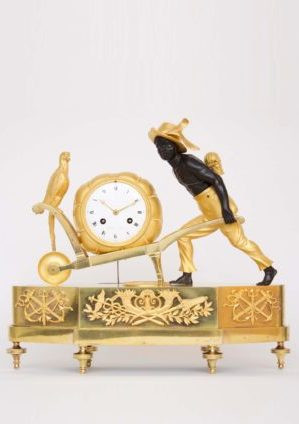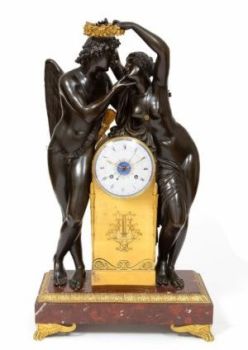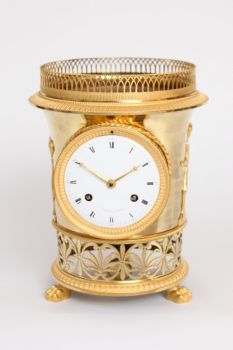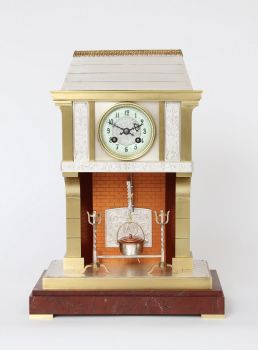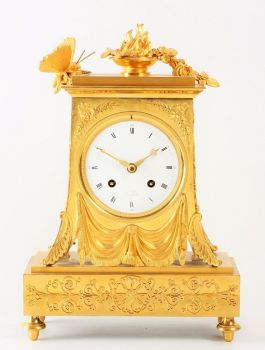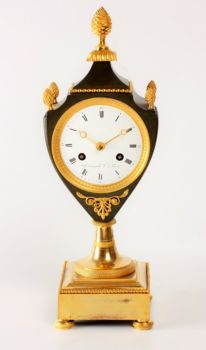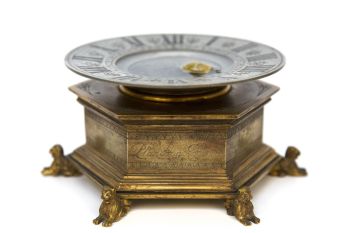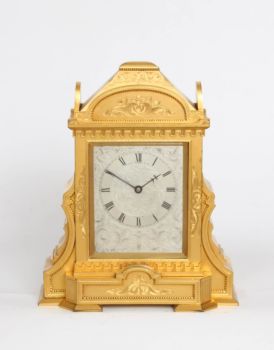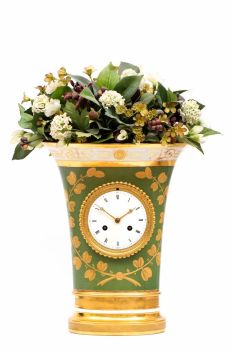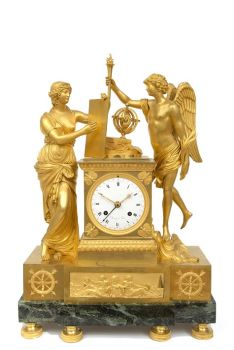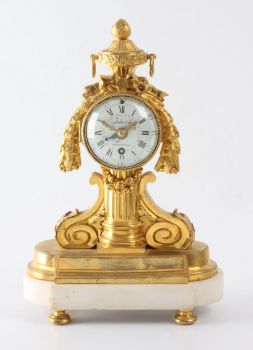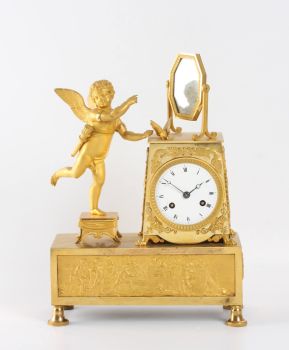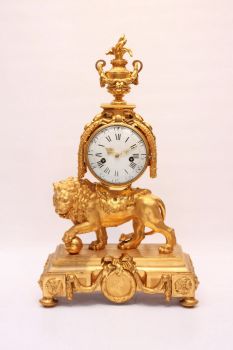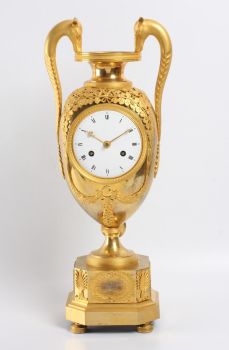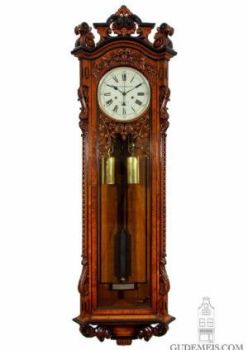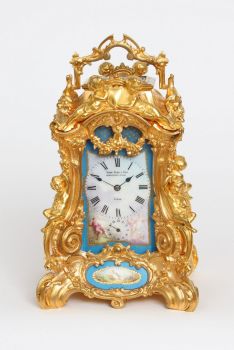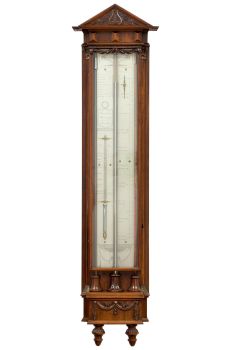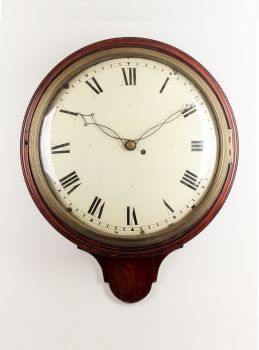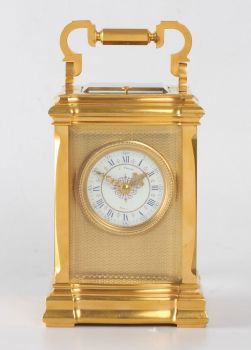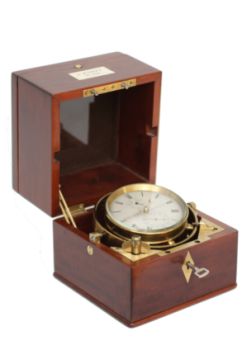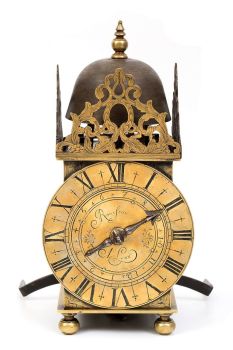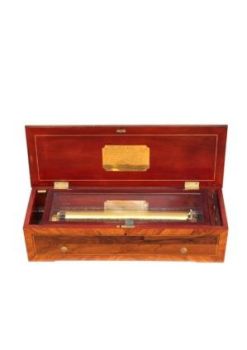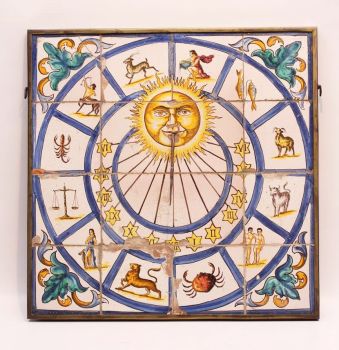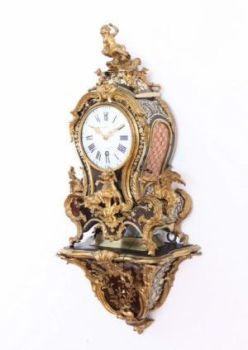A rare French Empire ormolu and bronze 'au bon sauvage' mantel clock Lesieur à Paris, circa 1800 1800
Lesieur à Paris
35.50 ⨯ 40 ⨯ 12 cm
€ 45.000
Gude & Meis Antique clocks and Music Boxes
- Sur l'oeuvre d'artThe dial
The 8.5-cm enamel dial has Roman numerals and is signed in gold Lesieur à Paris. The fine pierced and engraved hands are made of gilt brass.
The movement
The movement is driven by two spring barrels and has a duration of eight days. It is being regulated by anchor escapement in combination with a silk suspended pendulum. The clock strikes the hours and half hours on a bell by means of countwheel striking. The back plate is also signed Lesieur.
The fine ormolu and bronze case
The movement is fitted in an ormolu case shaped as a bale of cotton tied together with ropes. It lays on a well made wheelbarrow on which a seated parrot. The wheelbarrow is being pushed by an ormolu and patinated bronze 'bon sauvage' porter with enamel eyes and wearing a hat. The whole is placed on an octagonal base with lengthened sides. On the sides there are ornaments incorporating anchors, ropes and a trident. With these elements clearly referring to shipping. To the front there is an ornament incorporating horns of plenty, oak leaf, a peddle and a staff probably referring to prosperity and plenty. The clock is raised on eight turned feet.
Lesieur
Lesieur is being mentioned as 'pendulier' working in the Vieille rue du Temple in 1806 and in the Rue de la Verrerie between 1820 and 1850. Lit; Tardy, Dictionnaire des Horlogers Français, pp. 411.
Êtes-vous intéressé par l'achat de cette oeuvre?
Artwork details
Catégorie
Related artworks
- 1 - 4 / 24
- 1 - 4 / 12

